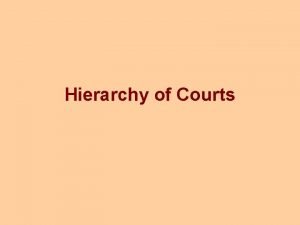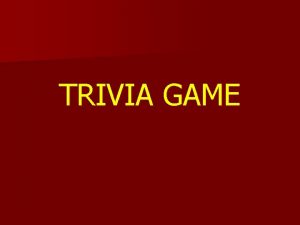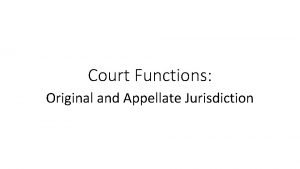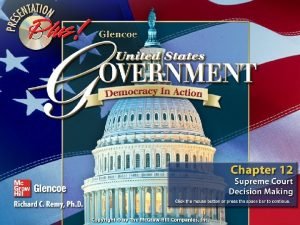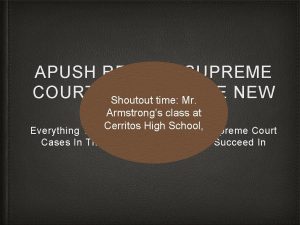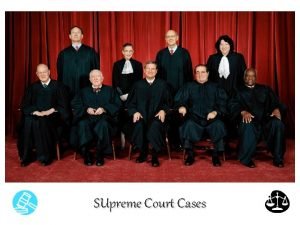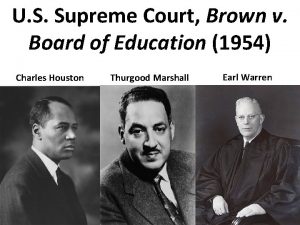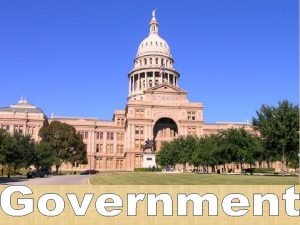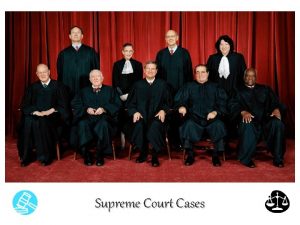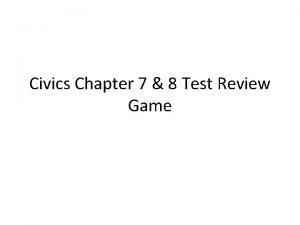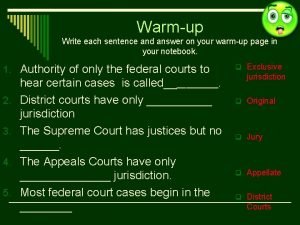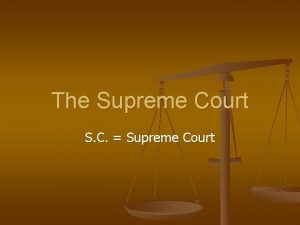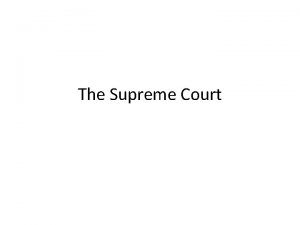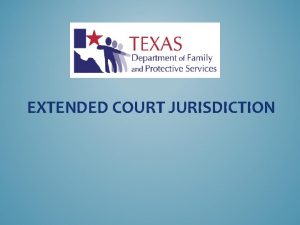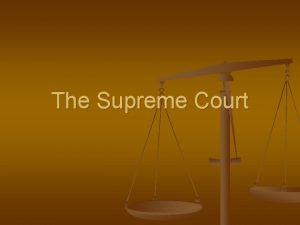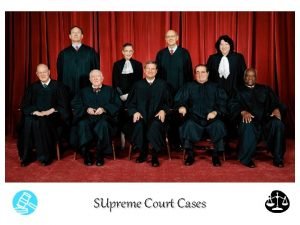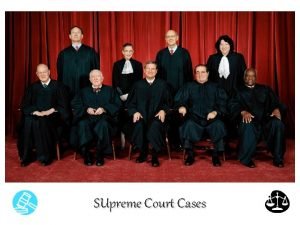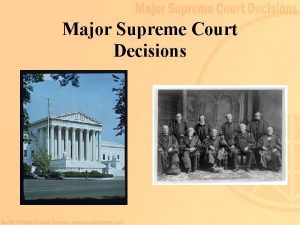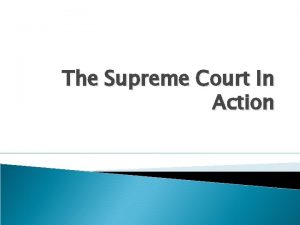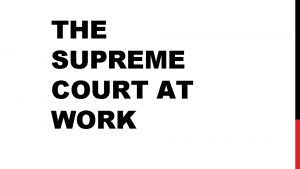The Supreme Court Jurisdiction has original jurisdiction in














- Slides: 14

The Supreme Court

Jurisdiction • has original jurisdiction in only two types of cases. (What is original jurisdiction again!? !? ) 1. cases that involve disputes between two or more states. 2. cases that involve diplomats from foreign countries. *In all other instances, the Court hears cases that have been appealed from the lower courts.

Duties of Justices • • nine justices—the chief justice and eight associate justices. chief justice = Court’s leader. sets this number and has the power to change it. choose which cases to hear from among the thousands appealed to the Court each year.

Qualification of Justices The Constitution does not name any qualifications for a Supreme Court justice.

Judicial Review: the power of the Supreme Court to say whether any federal, state, or local law or government action goes against the Constitution -Decide if a law is constitutional or nullify (cancel)

Limits on the Supreme Court

Limits on the Supreme Court • system of checks and balances puts limits on the power of federal courts

Supreme Court Procedures and Decisions

How Cases Reach the Court Nearly all cases come to the Supreme Court on appeal from a lower court. writ of certiorari - an order a higher court issues to a lower court to obtain the records of the lower court in a particular case

Selecting Cases • The Supreme Court does not have to accept all cases presented to it. It carefully chooses the cases it will hear. • Justices review possible cases and consider their merits. • merit = involves a key constitutional question. (violation of amendments) • Ex: freedom of speech, equal protection of the laws, and fair trials.

Caseload = workload of cases in a period of time The Supreme Court gets about 10, 000 petitions, or requests, for writs of certiorari each term. It hears arguments for about 75 to 80 cases.

Written and Oral Arguments Brief: a written document explaining the position of one side or the other in a case

Conference Each week during the term, the justices get together to make their first decisions about the cases they have been studying. • meetings take place in secret; no audience is present, and no meeting minutes are kept. • chief justice presides over the meeting and is the first to lay out his or her views on the case. • stare decisis-the practice of using earlier judicial rulings as a basis for deciding cases

Writing Opinions concurring opinion-a statement written by a justice who votes with the majority, but for different reasons dissenting opinion-a statement written by a justice who disagrees with the majority opinion, presenting his or her opinion unanimous opinion- the Supreme Court rules on a case in which all justices agree on the ruling
 Jurisdiction of high court
Jurisdiction of high court Is there a basketball court above the supreme court
Is there a basketball court above the supreme court Types of jurisdiction
Types of jurisdiction Court jurisdiction types
Court jurisdiction types Supreme court does
Supreme court does Important court cases apush
Important court cases apush Insular cases apush
Insular cases apush Supreme court
Supreme court The supreme court change
The supreme court change John marshall supreme court
John marshall supreme court Have supreme court
Have supreme court What do these headlines say about how the supreme court
What do these headlines say about how the supreme court Supreme court cases graphic organizer answers
Supreme court cases graphic organizer answers The u.s. supreme court works chiefly as a(n)
The u.s. supreme court works chiefly as a(n) How cases reach the supreme court worksheet answers
How cases reach the supreme court worksheet answers
